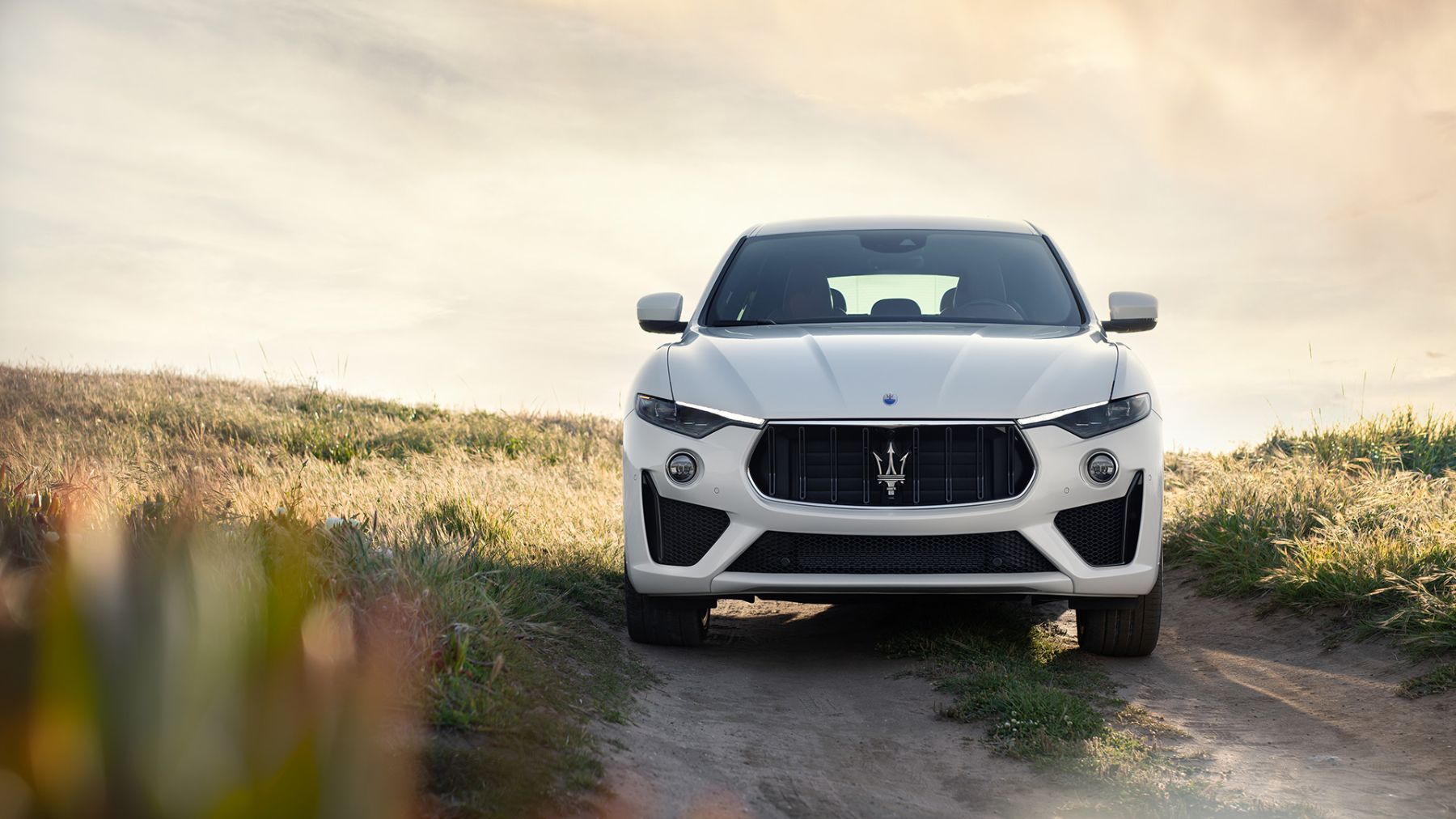
Going its own way
For some, mention of Maserati conjures images of exclusive GTs from the 1950s through early 1970s, with names like 3500 GT, Mistral, Mexico, Ghibli, Bora and Khamsin. Others may think farther back to historic Grand Prix cars and sports racers, including the legendary 450S. Today’s Maserati fans find an array of fast, luxurious, and innovative sedans, GT coupes and convertibles, SUVs, and a new mid-engine supercar, the MC20.
Maserati, which traces its lineage back more than a century, has been through nearly as many ups and downs as fellow Italian exotic marque Lamborghini. Today, Maserati seems to have found stability under the sprawling Stellantis umbrella, yet Maserati can surprise people. Notably, the Grecale SUV, GranTurismo coupe and convertible, and MC20 supercar all offer the choice between internal combustion engines or a full electric powertrain. The EVs wear the “Folgore” badge (Italian for lightning.)
We can probably expect more surprises from this long-running automaker.
Current Maserati Models
Grecale: Maserati’s entry model, the compact Grecale SUV competes with the Porsche Macan and starts around $70,000. That’s for the GT model with a turbocharged 2.0-liter four-cylinder engine giving 296 horsepower and having standard all-wheel drive. The Modena trim hikes output of the turbo four to 325 hp, but for that thrilling Maserati sound and feel, go for the Trofeo with its 523-hp twin-turbo V6. For around the same $110,000 you could instead choose the battery electric dual-motor Folgore model with 542 hp, 0-60 in four seconds, and 245 miles of EPA-rated range.
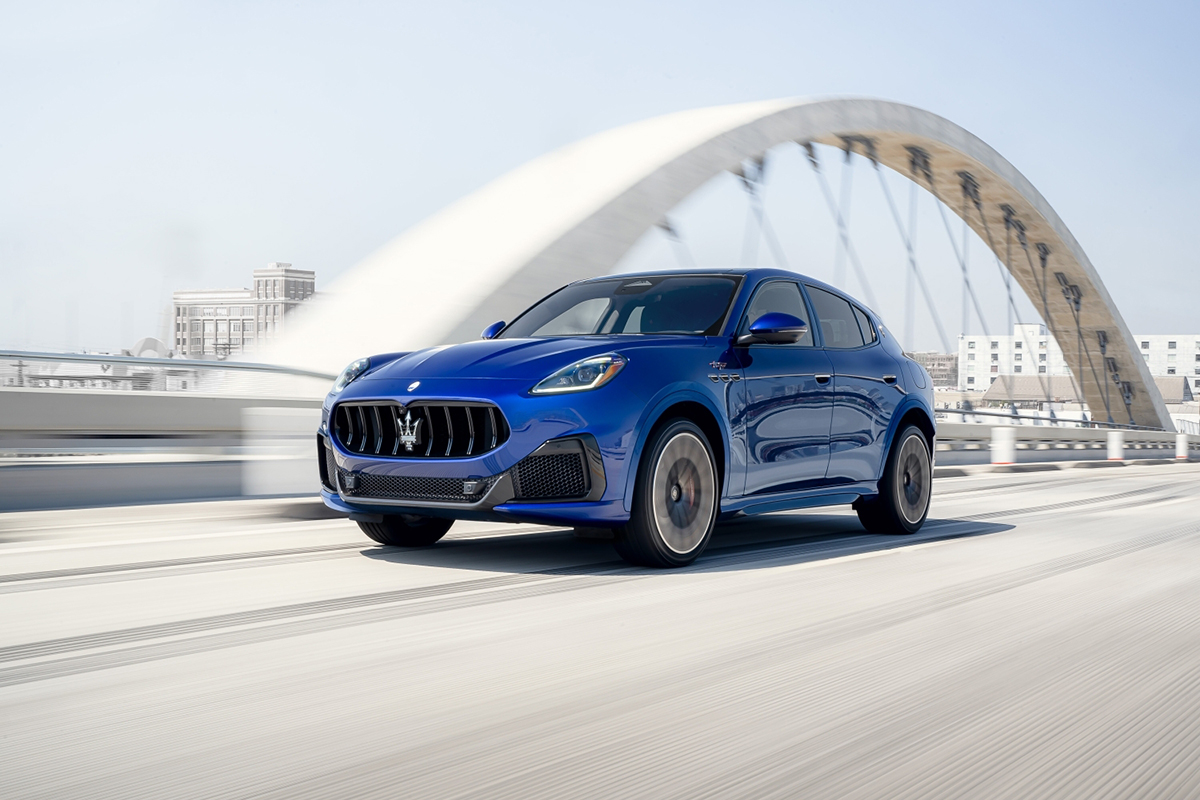
Ghibli: The Ghibli is the smaller of the two Maserati sedans and inherited its name from the automaker’s classic GT from the late 1960s/early 1970s. The 2024 model offered just one trim line, the Modena Ultima Q4 with a 424-hp twin-turbo V6 and all-wheel drive. Starting price was just under $110,000. There was an ultra-limited 334 Ultima model (just 103 made for global sales) with a twin-turbo V8, but the V8 has been permanently retired. The Ghibli is also heading toward retirement.
Levante: The 2024 version of Maserati’s first SUV was down to two trim levels, each with a different tune for the 3.0-liter twin-turbo V6: 345 hp for the GT Ultima and 424 hp for the Modena Ultima, and both with all-wheel drive. Starting at about $104,000 the Levante competes with the Porsche Cayenne but is pricier to start and does not offer the variety that the German model does.
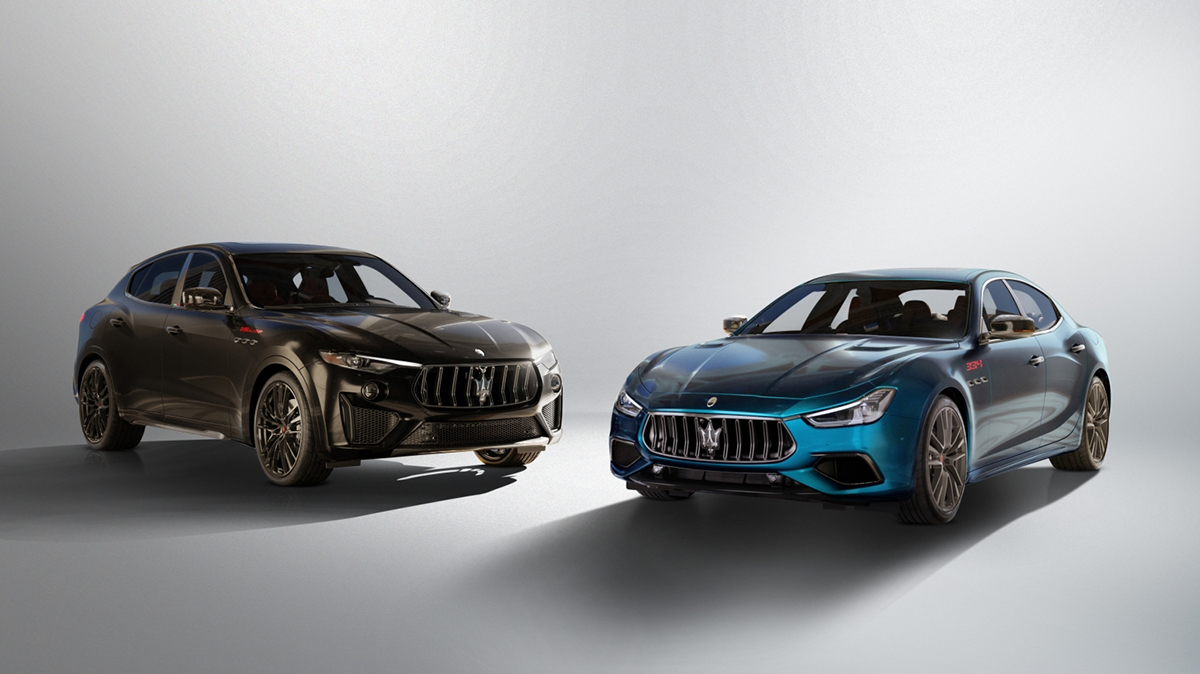
Quattroporte: In 1963, Maserati was the first of the post WWII Italian high-end automakers – and so far the only one – to offer a high-performance sedan. Like the Ghibli, the Quattroporte is heading to its conclusion. For 2024, there was just one version, the Modena Ultima, with the 424-hp twin-turbo V6 and all-wheel drive, starting around $139,000.
GranTurismo/GranCabrio: The GranTurismo and its GranCabrio convertible version keep the spirit of 1960s and 1970s Maserati GTs alive while also looking to the future. These are fast, luxurious cars that will turn heads in any city. Maserati is the only carmaker in the segment to offer the choice of internal combustion or battery-electric powertrains in the same car. Starting around $158,000 for the first rung on the ladder, the Modena trim brings a 483-hp twin-turbo 3.0-liter V6, 8-speed automatic, and all-wheel drive. The $190,000 Trofeo trim ups the output to 542 hp. For just $2,000 more, the Folgore EV version gives 751 hp, is the quickest in the line, and has a 233-mile range on a charge. The convertible adds about $13,000-$15,000 to pricing.
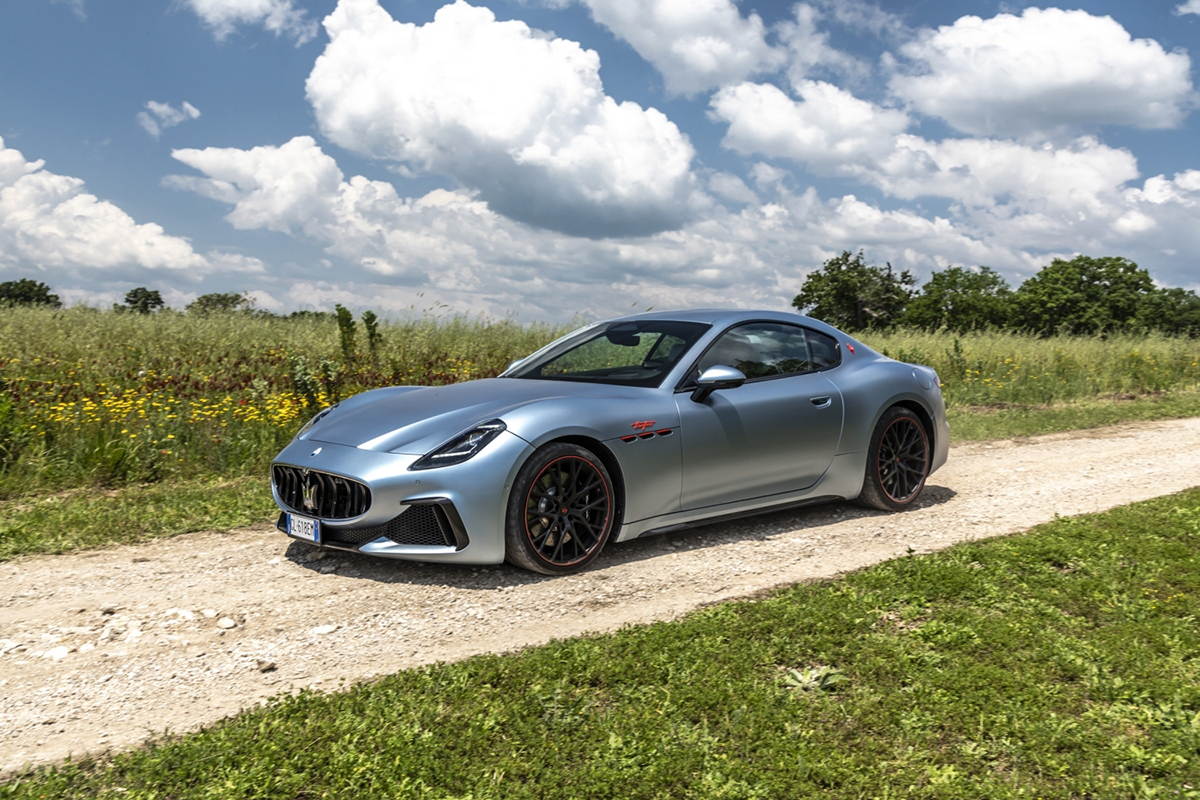
MC20: The Maserati MC20 (the name means “Maserati Corse 2020) was the marque’s first real sports car in decades. An all-new, mid-mounted twin-turbo V6 called “Nettuno” (for Neptune) gives 621 horsepower, and the car’s light weight make it fast. The design is off-the-charts beautiful, and road performance is stunning. The MC20 Cielo is the convertible version and, for 2025, Maserati added a track-oriented MC20 GT2 Stradale. Pricing starts at around $243,000. An electric Folgore version is expected in 2025.
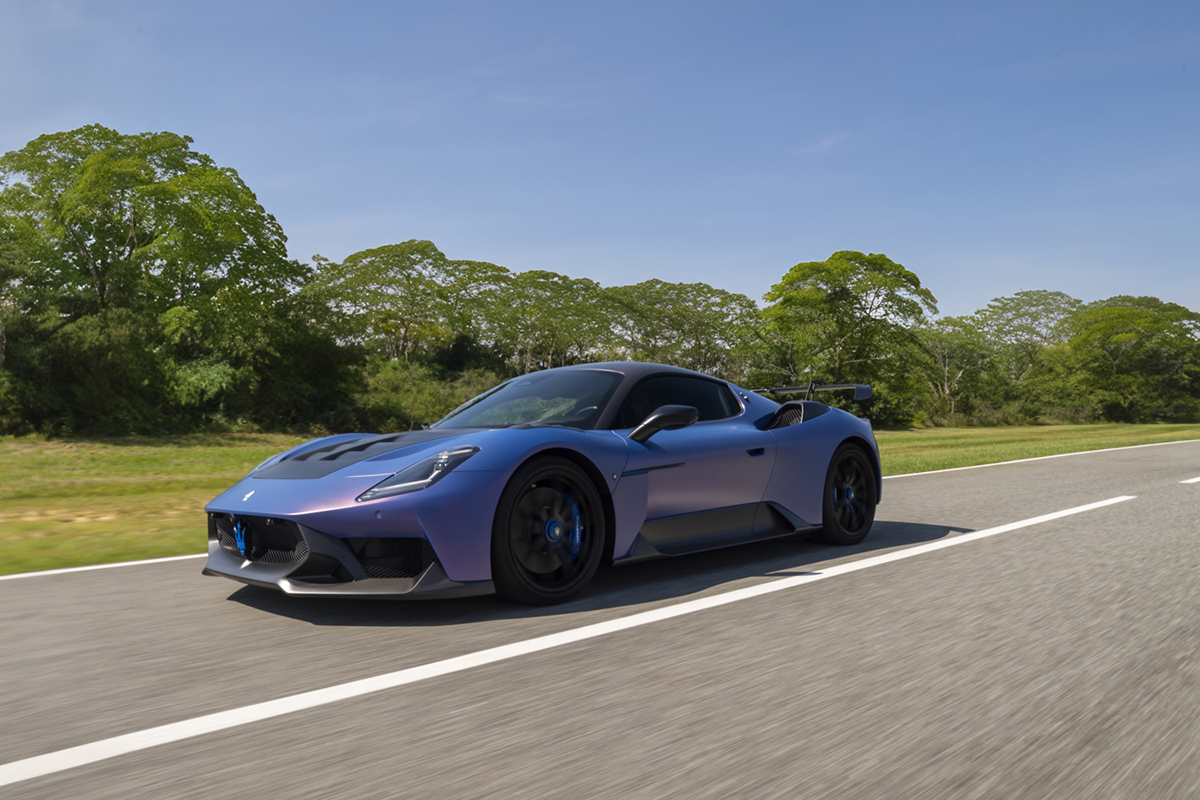
Racing Long Before Ferrari
The Maserati brothers began building and racing Grand Prix cars in 1914, with the first cars called “Maserati” arriving in 1926. That year, a Maserati won its class in the Targa Florio, with Alfieri Maserati driving. The trident that Maserati adopted as its symbol was inspired by the spear depicted with Roman mythology’s god of the sea, Neptune, and specifically the one in the Fountain of Neptune statue in Maserati’s original base, Bologna.
The marque became a major force on the Grand Prix circuit, and the Maserati 8CTF won the Indianapolis 500 in 1939 and 1940 with Wilbur Shaw driving. In addition, Juan Manuel Fangio became F1 Champion in 1954 and 1957 driving the Maserati 250F.
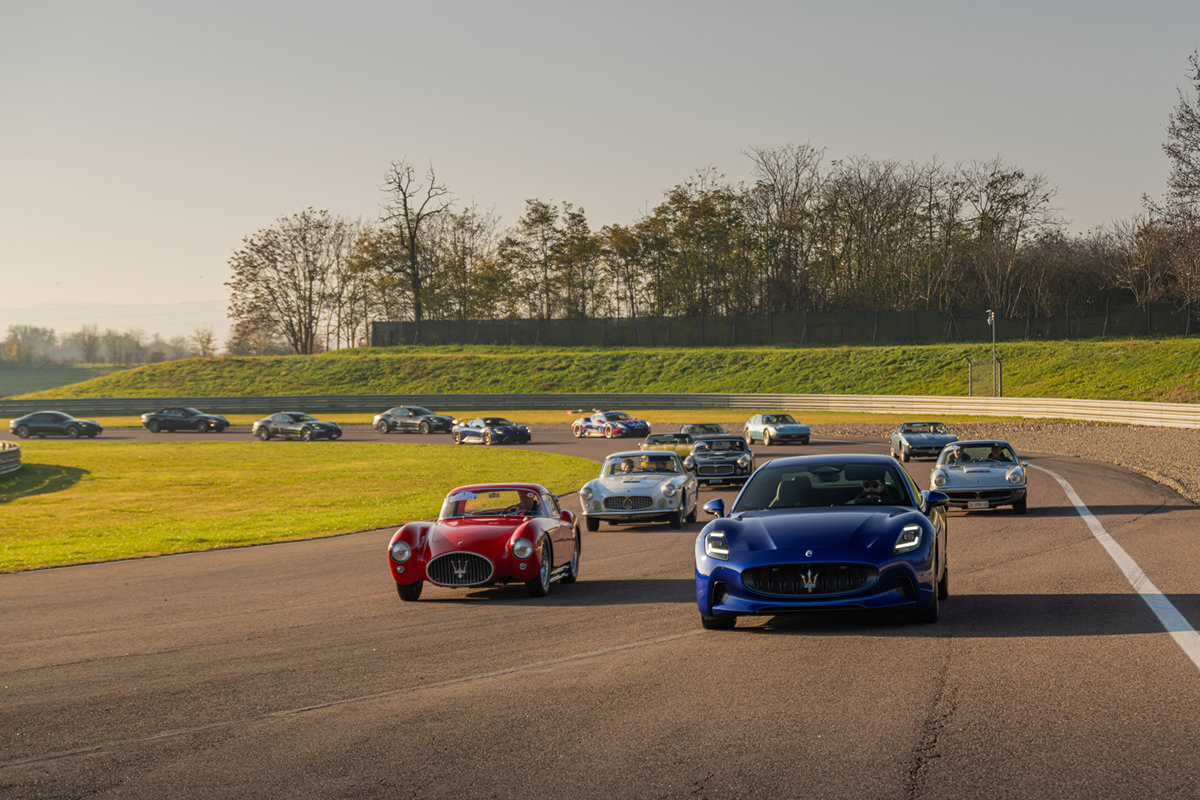
Road Car Arrival
The Orsi family bought Maserati in 1937 and moved it to Modena. The first Maserati road cars appeared 10 years later, with various A6 6-cylinder models built in small batches through 1956. Maserati built racecars into the early 1960s, including the Tipo 61 that earned its “Birdcage” nickname from a complex tube-frame chassis. Premier has leased a number of these now highly collectible Maserati sports racers from this period.
Road car production began in earnest with the 3500 GT, with some 2,000 coupes made from 1957 through 1963, along with 245 Spyders by Vignale and a handful of specials by other coachbuilders. The 3.5-liter inline six made up to 235 horsepower in later fuel-injected form. At special request for its top customers, Maserati also built the 5000 GT, essentially a 3500 GT using the V8 derived from the 450S sports-racer. Just around 30 were produced.
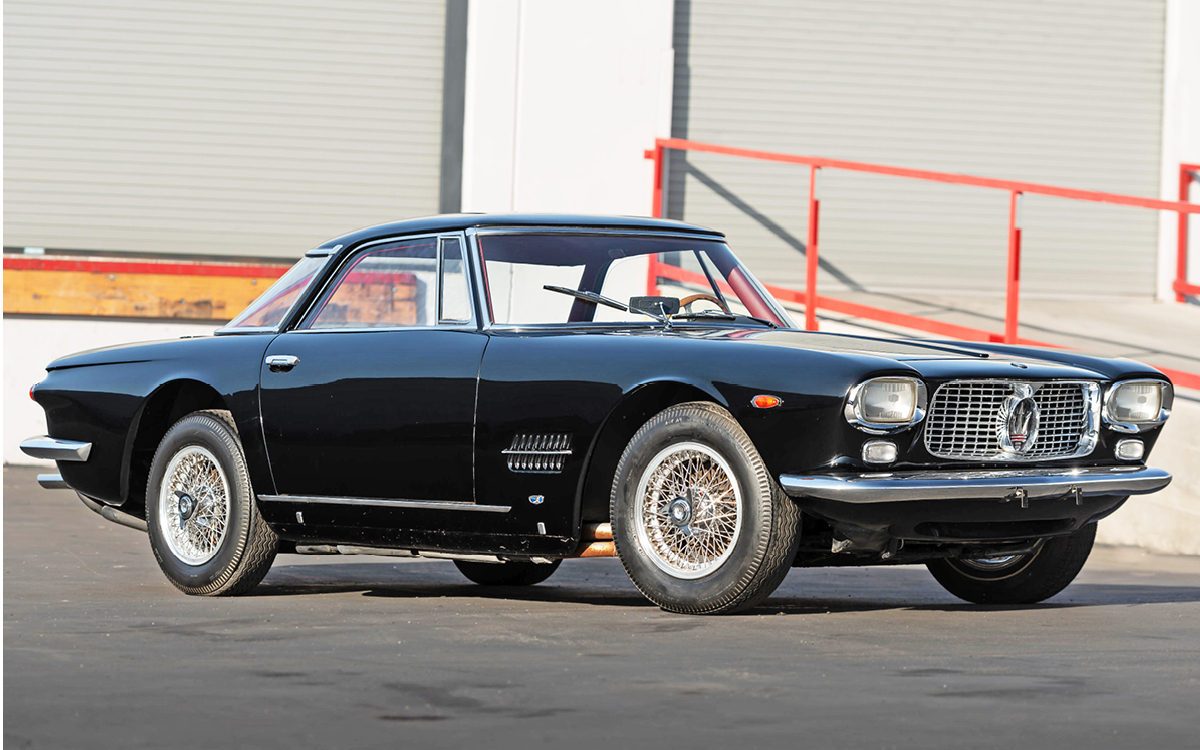
Maserati Momentum
The 1962 Sebring coupe, a re-bodied 3500 GT, was named for Maserati’s win in the 12 Hours of Sebring in a 450S sports racer five years prior. Fewer than 600 were built through 1968, later models having a 4.0-liter version of the inline six. The option of a 3-speed automatic underscored the marque’s luxury GT persona.
In 1963, Maserati introduced two Frua-designed models. The Mistral was a shorter-wheelbase GT with a gorgeous Spyder companion and the inline-six engine. The Quattroporte, with a tamed version of Maserati’s V8 racecar engine, was billed as the world’s fastest sedan. Just over 700 were built into 1969. The 1965 Mexico, based on a shortened Quattroporte chassis, continued Maserati’s migration to V8 power.
Many feel that the 1967 Ghibli was the marque’s masterpiece. Designed by Giorgetto Giugiaro for Ghia and powered by a 4.7-liter V8, the Ghibli’s stunning, angular form set the direction for a new generation of Maserati GTs. A run of just under 1,200 coupes and 125 Spyders was similar to the Ferrari 365 GTB/4 Daytona, as was the 174-mph top speed of the later 4.9-liter Ghibli SS. A four-seat companion, the Maserati Indy, arrived for 1969.
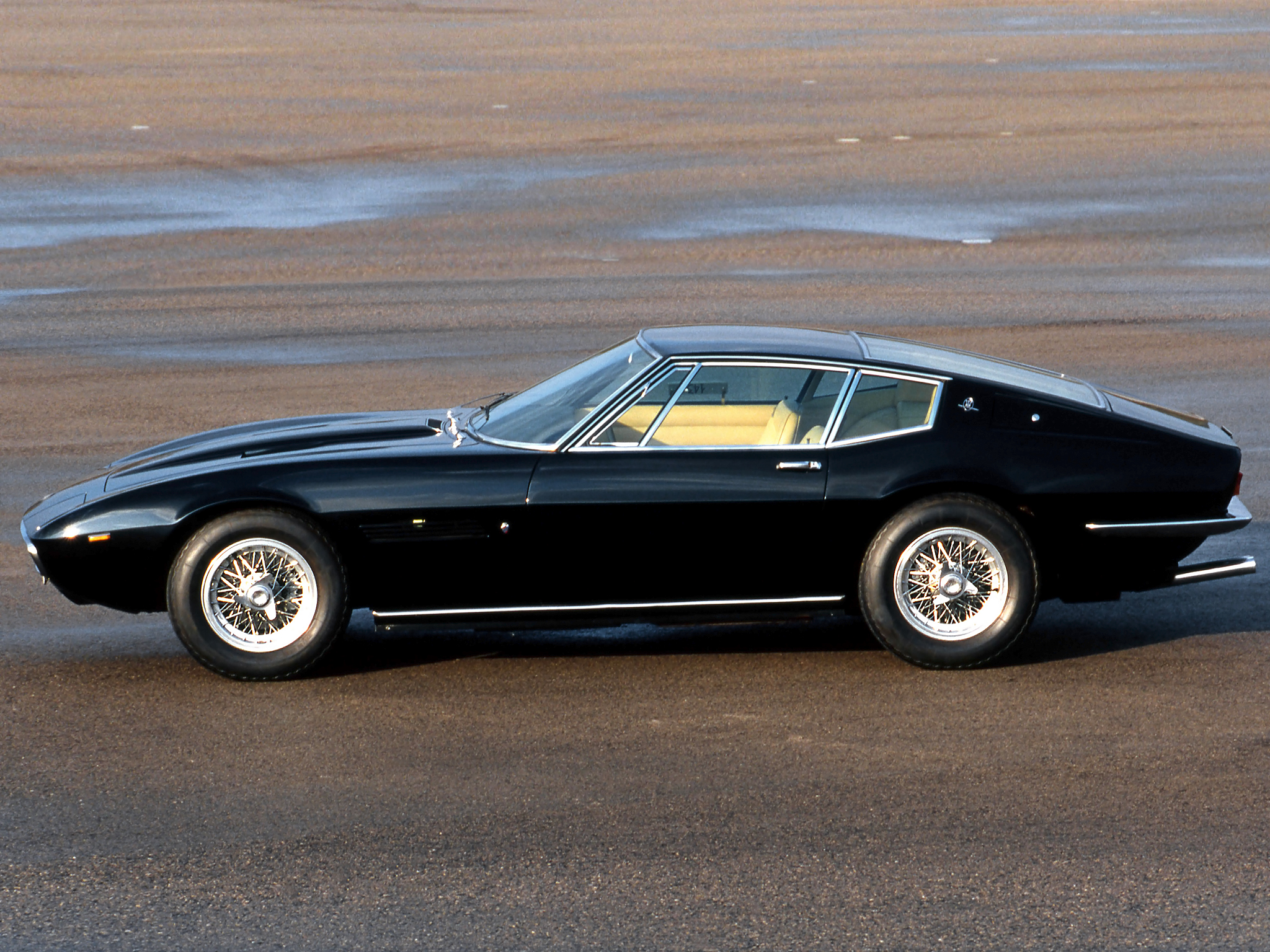
French-Italian Fusion
Change came in 1968, when Citroën purchased Maserati, a seemingly odd pairing that grew from the French carmaker’s contract to buy Maserati’s new V6 engine for its own Citroën SM grand tourer.
Under Citroën, Maserati produced a string of more advanced models, including the mid-engine Bora supercar and its V6 sibling, the Merak, and the Ghibli’s successor, the Khamsin. In 1975, Citroën sold Maserati to Alejandro de Tomaso, the Argentine-born auto magnate renowned for the Ford-powered Mangusta and Pantera. The 1977 Kyalami was a slightly restyled de Tomaso Longchamp coupe with a Maserati V8 in place of the Ford V8.
A slight detour
The de Tomaso period is best known for a car that tested the strength of the Maserati name. The 1985 Biturbo coupe resembled a BMW 3 Series and spawned a parade of offshoots. The plan to boost sales worked for a while but then fell apart, as did many Biturbos.
Chrysler bought a 16% stake Maserati in the 1980s, one result being the comically horrendous front-wheel drive car called “Chrysler’s TC by Maserati.” Fiat took over in 1993 and put Maserati back on a steady course, even assigning its engines to be developed with Ferrari, which it also owned at the time. (We won’t even get into how Fiat then rescued a moribund Chrysler and now had all those brands in its portfolio.)
Maserati began its return to form in the late 1990s with the V8-powered 3200 GT and later 4200 GT, better known as simply the Coupe and Spyder models. Their successor, the 2007 GranTurismo, elevated exterior design and performance further, and by then the Quattroporte had returned as the brand flagship model. A smaller companion sedan, the Ghibli, arrived in 2013. The GranTurismo was fully redesigned for 2023.
Underscoring its bold approach in the premium segment, Maserati is steering toward a more electrified future by currently offering fully electric versions of its Grecale SUV, GrandTurismo/GranCabrio and soon the MC20, alongside the gas-powered versions.
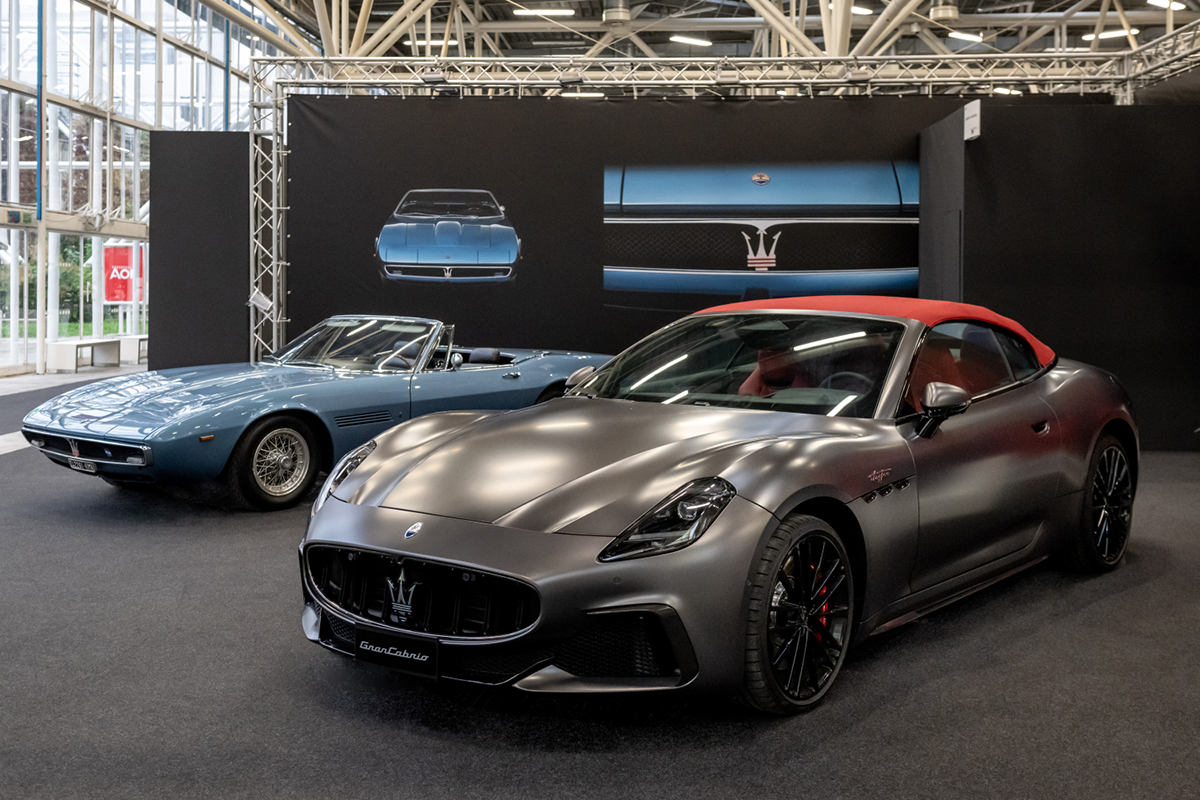
Leasing your Maserati with Premier’s Simple Lease
Whether you’ve got your eye on a classic 1960s Maserati or one of the latest Ghibli or Quattroporte sedans, GranTurismo models or the Levante SUV, your first call should be to Premier Financial Services for a Maserati lease.
Premier has written hundreds of Maserati leases and has worked with Maserati dealers across the country. Our portfolio has included some great vintage and unique models. Contact us when you’re ready to shop.
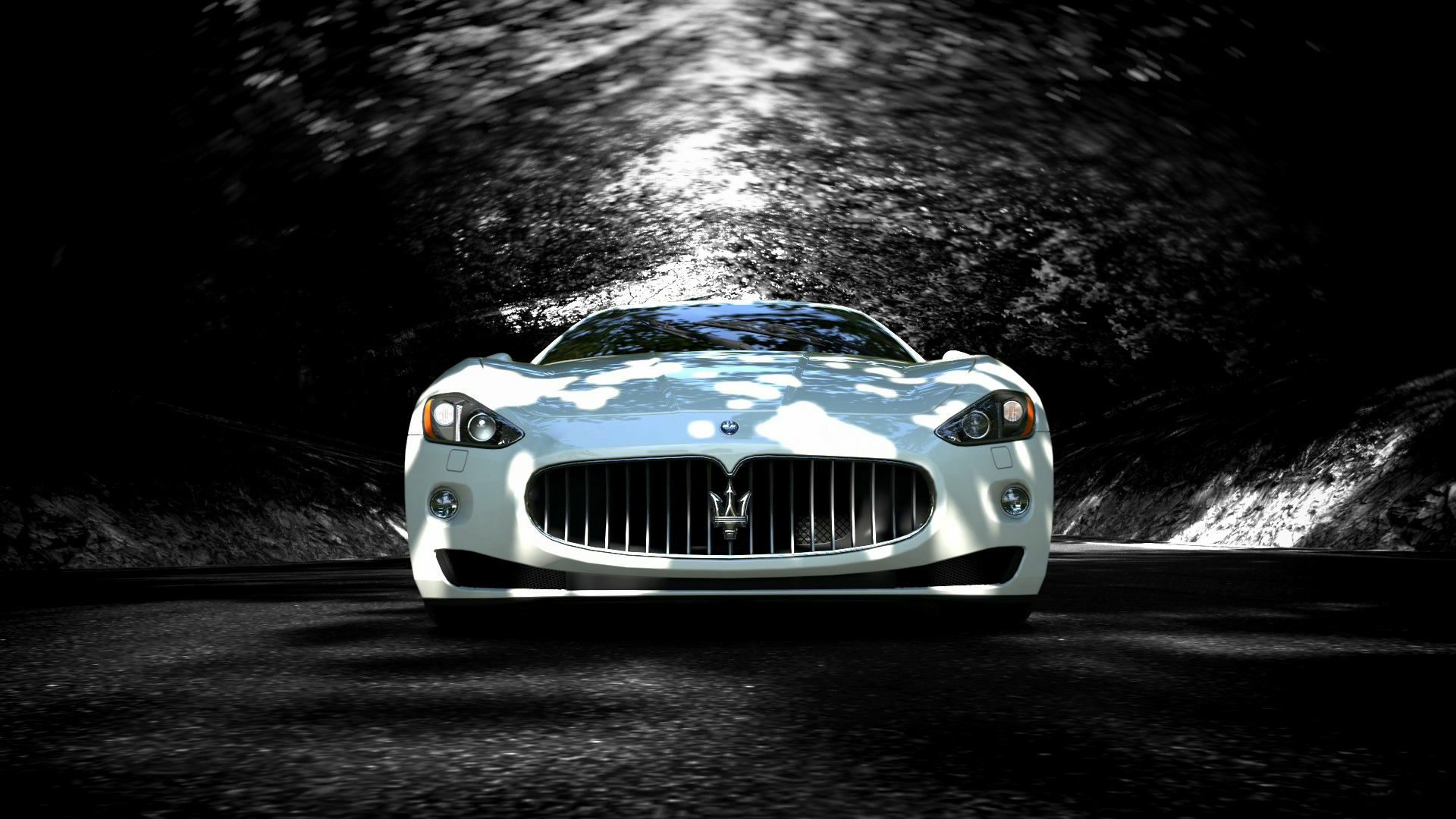
Premier Financial Services is not a licensed dealer and is not otherwise sponsored or endorsed by, or affiliated with Maserati S.p.A.
